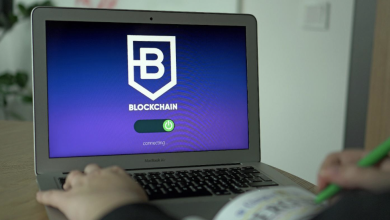Trust is the core of a successful online business. Customers buy without seeing or touching your product, therefore honest, clear communication is what that they require to feel safe. If you are able to communicate effectively and effectively, you can turn first-time buyers into loyal customers who will keep returning.
This article provides practical methods to engage with customers on the internet to make them feel appreciated and confident about your brand. We’ll also discuss the ways that loyalty programs for e-commerce can improve these relationships and encourage customers to remain loyal to your brand. Let’s build trust by using smart, powerful communications that are resonant.
What Are E-commerce Loyalty Programs and How Do They Work?
Ecommerce Loyalty Programs are a way to reward your customers for selecting your brand time and time again. They are like a thank you note with perks like discounts, points or special deals for activities like purchasing reviews of products, buying referrals to friends. Customers sign up at no cost, and earn rewards based on how they engage.
For example, spending $1 could earn 10 points that can be used to purchase discounts or a free item. Some programs offer tiers, such as bronze and silver with better reward points for more advanced levels. If they are paired with a strong message and a strong brand image, these programs help increase trust by showing the customer that they are valued and appreciated by making them feel loved and confident in your brand.
The Most Effective Strategies to Communicate with Online Customers
1. Be Clear and Transparent
Provide clear information about your product, pricing and policies. Customers are not interested in hidden costs or vague descriptions and so make sure you list shipping costs along with return policies, as well as specifications for your products with clarity. For loyalty programs for e-commerce define how you accumulate points as well as redeem them in easy phrases.
Transparency creates trust. If an item is not in availability, let customers know in advance to avoid a sour experience at check-out. Clear communications show your honesty and reliability.
Make sure you use simple language on your email, website as well as your ads. Avoid using fine print that is fraudulent. If customers know the process they will trust you more and will shop with confidence.
2. Respond Quickly to Inquiries
Answer questions from customers quickly. Within hours instead of days. Rapid responses demonstrate that you value the time of your customers and their concerns. If someone inquires about your loyalty program for online retailers send a clear, courteous response, including the steps to sign up in the program and receive rewards.
Rapid communication can turn curious customers into loyal buyers. For instance, responding to a conversation regarding the size of a product can seal an order. Even a simple “We’re checking on this!” informs customers.
Automated responses can be set up for frequently asked questions, but keep the responses personal. Rapid, prompt responses make customers feel heard, thereby establishing confidence in your brand’s reliability.
3. Personalize Your Messages
Make sure you tailor your message to the specific needs of each customer. Make use of their names in emails and suggest products based on their purchasing record. If you have an e-commerce loyalty program send messages such as “Hey Lisa, you’re 30 points from a free tote!”
Personalization will make customers feel appreciated rather than a generic number. A birthday gift or a note of appreciation for their loyalty increases the connection they feel to your company.
4. Use a Friendly, Human Tone
Write like you’re talking with someone you know. A friendly, warm tone can make customers feel at ease. To promote your loyalty program on e-commerce make it clear, “You’re racking up points–time for a cool reward!” instead of using stiff formal language.
Try your tone on your social media accounts, emails and on your website. A consistent, authentic tone demonstrates your authenticity, creating confidence and keeping customers involved in your business.
5. Be Consistent Across Channels
Make sure your tone and message is uniform across your emails, website as well as on social media. If your loyalty program for e-commerce includes “100 points = $10 off” on your website Don’t mention “$5 off” in an email. Consistency creates trust.
Inconsistent messaging can cause confusion for customers and can undermine trust. Your branding from colors to voice is consistent across all channels making it a consistent experience.
Make sure that all channels have the same information about the policies and rewards. An integrated approach helps customers feel secure that they can trust the reliability and professionalism of your brand.
6. Offer Proactive Support
Contact customers before they make a complaint. If there are delays with shipping and customers complain, first email them an update. You can also provide points to loyalty programs for e-commerce as a gesture of goodwill. Being proactive shows that you value the customer’s satisfaction.
The anticipation of customer needs creates trust. For instance, you could include a step-by-step guide when you send order confirmations to complex products to avoid confusion. This shows that you take consideration.
7. Educate Customers About Your Brand
Tell your company’s values, story and methods to build a strong connection. If you’re eco-friendly, explain your sustainable practices. Give points to loyalty programs for e-commerce to customers who make green choices, such as the slowing of shipping to lower emissions.
Education creates emotional bonds. Customers are more likely to trust brands they know and are able to align with. You can share behind-the-scenes information on your social media channels or on your website to establish trust.
Make sure you are authentic with your narrative. The emphasis on your mission will make people feel connected to something significant, increasing their confidence and loyalty to your company.
8. Make Returns and Refunds Easy
Make it easier to return your items and ensure you are adamant about your products. Explain clearly the process for returning items and how to process refunds promptly. Give points to loyalty programs for online shopping to customers who return items, in order to keep customers interested.
A return policy that is easy to make confidence. Customers appreciate brands that do not make them go through hurdles. Make sure your policy is clearly displayed on your site.
Fast, fair refunds demonstrate that you value customer satisfaction. This type of trust can encourage customers to return to buy as they know that they’re safe in the event of a problem.
9. Engage on Social Media
Engage with customers via platforms such as Instagram as well as Twitter. React to feedback, respond to questions, and share interesting content. Create a contest that is tied to your loyalty program for e-commerce for example “Share a pic with our product for 50 points!”
Engagement creates a sense of crowd around the brand. Customers appreciate brands that are friendly and responsive. Social media is a great way to showcase your values and personality.
10. Follow Up After Purchases
Send a thank you email or ask for feedback following the purchase. Include a reminder to your loyalty program on e-commerce such as, “You earned 200 points–check your rewards!” The follow-ups will show that you appreciate your customers’ business.
Post-purchase communication keeps customers engaged. Simple “How’s your new sweater?” Email helps build a rapport and encourages customers to buy more. Respond to feedback and enhance.
Follow-up with your customers in a timely and personal manner. This helps build trust by showing your customers that you value your experience and want customers to return.
11. Be Honest About Mistakes
Acknowledge when you’ve made a mistake for example, a missed order or a wrong product. Customers appreciate brands that acknowledge their mistakes. An honest apology shows that you’re human and are concerned about the experience of your customers. Be clear of excuses and look for solutions.
Make quick decisions to address problems quickly. Transparency regarding mistakes can reassure customers, and makes the customers much more likely believe and remain loyal to your company.
Conclusion
Effective communication transforms online shoppers into loyal customers. When you are clear and responsive, as well as personal and transparent, creating a warm experience that helps build trust. Ecommerce loyalty programs help to increase the experience by offering rewards to customers and giving them the feeling of being valued and connected.
Every strategy, from transparency to proactive support — shows customers that you are concerned about their experience. When it comes to a platform like SkillsYouNeed where connections and growth are crucial, these strategies are perfect for fostering lasting connections. Begin using these strategies now in order to establish trust with customers, increase loyalty, and build an audience of customers who are a strong advocate for your brand.



